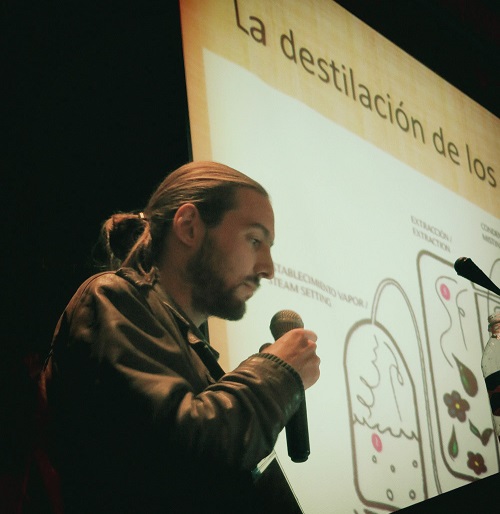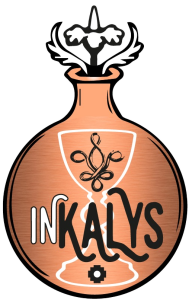THE QUINA TREE
The Quina or Cinchona tree (Cinchona officinalis) is a medicinal plant that has been used by indigenous communities in South America for centuries to treat various ailments, including autoimmune disorders, fevers, and especially malaria. Native to the tropical Andean regions of South America, the Quina tree can reach a height of up to 20 meters. It has a thick bark and long, shiny green leaves, produces white or pink flowers, and fruit in the form of capsules. Its predominant active ingredient, 'quinine', is found in the bark of the tree and is soluble in ethyl alcohol, which is why native populations often use the plant in the form of macerations in pisco or aguardiente. It is interesting to mention that being a 'bitter tonic', quinine is also present in tonic water, a key ingredient in the preparation of popular cocktails such as "gin and tonic."
IN HISTORY
The history of Cinchona is closely linked to the Countess of Chinchón, wife of the Viceroy of Peru in the 17th century. The Countess contracted malaria during her stay in Peru and was treated by local healers with a decoction of Cinchona bark. Thanks to this remedy, the Countess regained her health and, as a gesture of gratitude, decided to take Cinchona seeds with her to Spain, which allowed this medicinal plant to be known and used worldwide. Cinchona is considered a heritage of Peru and is an important element in its national flag, where it is represented by a Quina tree with green leaves.
IN HOMEOPATHY
It is worth mentioning that Cinchona played a fundamental role in the creation of Homeopathy. In 1790, Samuel Hahnemann, a German physician, experimented with quinine and discovered that when administered in high doses, it induced fever, but in lower doses, it cured it. This empirical discovery led him to establish the key principle of homeopathy called the "Law of Similarity" which derives from the famous phrase of Hippocrates "Similia similibus curantur" (like cures like). The law of similarity holds that substances that cause symptoms in large doses can be used to treat the same symptoms in low doses. Based on this principle, Hahnemann founded homeopathy and developed many homeopathic remedies based on cinchona and quinine to treat a variety of diseases.
IN MODERN PHARMACOLOGY
The discovery of the active ingredient of cinchona, the alkaloid called 'quinine', was a significant milestone in the history of medicine when it was first extracted from the plant's bark in 1820. The drug was proven effective in the treatment of malaria,1and its use quickly spread worldwide. Over time, quinine gave rise to the creation of synthetic derivatives such as chloroquine, a drug that remains the most widely used antimalarial globally and is prescribed as an immunomodulator for autoimmune diseases such as lupus and rheumatoid arthritis. It should also be noted that quinine is known to be a sclerosing agent as well as a angiogenesis inhibitor2, and is used in 'sclerotherapy,' a treatment for hemangiomas, certain neoplasms, hemorrhoids, and varicose veins.
Several recent studies have shown that both quinine and chloroquine have great anti-inflammatory power through their inhibition activity of certain pro-inflammatory cytokines3such as tumor necrosis factor alpha 'TNF-α' and interferon gamma 'IFN-γ'. For this reason, these compounds are very useful in the treatment of 'postmodern seasonal neo-flu.'4A 2021 study suggests that quinine, as a 'bitter tonic,' has a strong affinity for 'bitter taste receptors' (TAS2Rs)5, which play an important role in regulating mast cells6. Through this mechanism, the study concludes that quinine may help alleviate symptoms related to asthma789, eczema, and other phenomena related to high levels of histamines10. The data seems to indicate that quinine could make a significant contribution to the management of 'mast cell activation syndrome'. Knowing that chronic over-activation of mast cells causes inflammation and, therefore, accelerated aging of the body, we can conclude that occasional consumption of quinine could favor longevity. In fact, some anti-aging supplements, such as quercetin and resveratrol, are famous for being mast cell stabilizers.
*Disclaimer: It should be noted that depending on the dosage, quinine can have side effects such as headache, nausea, dizziness, insomnia, and alterations in heart rhythm. In addition, quinine is contraindicated in certain individuals, including those with coagulation disorders, myasthenia gravis, renal and hepatic insufficiency, and in pregnant or breastfeeding women. Therefore, it is essential to consult a doctor or healthcare specialist before taking quinine and avoid self-medication, as it can be dangerous.
THE HERITAGE OF ANCESTRAL MEDECINE
It's impressive to note how local healers discovered and used this plant so significantly centuries ago, demonstrating a deep wisdom in their relationship with nature, especially the plant kingdom. Cinchona is an example of how nature can offer effective solutions to human health problems, and wise physicians of the past used this symbiotic relationship to treat diseases. It is essential to preserve the knowledge of healing plants and ancestral medicine as the heritage of humanity and the earth. This not only ensures the continuity of research and development of new treatments, but also allows future generations to learn and benefit from the wealth of wisdom inherited from our ancestors.

Pierre
Fitoterapeuta, Aromaterapeuta, Wellness coachHerborista de profesión, apasionado por la etnobotánica y practicante de la alquimia. Mis intereses abarcan desde las sabidurías antiguas hasta las ciencias modernas. Investigo temas relacionados con la herboristería, la nutrición, la alquimia y la longevidad. Me dedico a la formulación de productos naturales en el laboratorio. Doy talleres y consultas en salud holística, integrando herramientas como la fitoterapia y la aromaterapia, la alquimia y el hermetismo, la nutrición, el fitness y la longevidad.

Inkalys es un emprendimiento que nació de la voluntad de fomentar la salud, revalorando los conocimientos ancestrales. Queremos preservar la memoria de las poblaciones nativas, la soberanía y el derecho a la salud natural. Nuestra misión es investigar sobre los principios activos de las plantas y experimentar nuevas formas de tratamiento. Si te gustó este artículo y deseas hacer una donación, puedes hacerlo con criptomonedas. Su apoyo significa mucho para nosotros ya que sirve a la preservación del conocimiento ancestral y el desarollo de productos alquímicos.
- Quinine, an old anti-malarial drug in a modern world
- Quinine and urethane sclerosing agents in the treatment of oral and facio-cervical hemangioma
- Quinine decreased the release of pro‐inflammatory cytokines
- Potential of Quinine Sulfate for COVID-19 Treatment
- The Activity of Quinine on Bitter Taste Receptors
- Bitter taste receptor (TAS2R) agonists inhibit IgE-dependent mast cell activation
- Bitter Taste Receptor Agonist (Quinine) - Airway Smooth Muscle Cells
- Bitter Taste Receptors: an Answer to Comprehensive Asthma Control?
- The Role of Quinine-Responsive Taste Receptor Family 2 in Airway Immune Defense
- Therapeutic effects of quinine in a mouse model of atopic dermatitis

